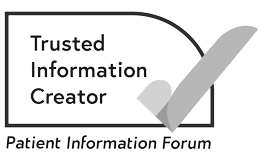Treatment for lung cancer
About lung cancer treatment
In this video Dr Ranj is joined by Dr David Gilligan to take an in-depth look at lung cancer, exploring its symptoms, testing, stages and treatment options.
Treatment for lung cancer can include:
- surgery
- chemotherapy
- radiotherapy
- targeted therapy drugs
- immunotherapy drugs.
You may have more than 1 type of treatment. Some treatments may be given together, for example chemotherapy and radiotherapy. Or you may have different treatments, given one after the other.
The treatment you have will depend on:
- the stage of the cancer
- the type of the lung cancer
- the results of tests on the lung cancer cells
- your general health
- your treatment preferences
- how able you are to do everyday things – this is called your performance status.
Your performance status
When deciding on the best treatment for you, your cancer doctor checks your overall health. They also measure how well you can do ordinary daily activities. This is sometimes called your performance status. It helps you and your doctor think about how a treatment may affect your:
- ability to take care of yourself
- quality of life
- ability to do things that are important to you.
Doctors use different scales to help them to measure your performance status. They usually give a grade or performance score between 0 and 4.
A score of 0 means you are fully active and can do all the things you did before your cancer diagnosis. A score of 4 means you are spending most of your time in bed, needing full care.
You and your doctor can make decisions about which treatments are best for you, based on your performance score.
Your healthcare team want to make sure you get the most effective treatment. They need to make sure it is right for you, and that the risks do not outweigh the possible benefits.
Your cancer doctor and nurse will involve you in treatment decisions, so you can talk about your choices. They can also help if you need to make decisions about treatment.
Newer treatments are being developed. Your cancer doctor may talk to you about having treatment as part of a clinical trial.
Getting support
We understand that having treatment can be a difficult time for people. We're here to support you. If you want to talk, you can:
- Call the Macmillan Support Line for free on 0808 808 00 00.
- Chat to our specialists online
- Visit our lung cancer forum to talk with people who have been affected by lung cancer, share your experience, and ask an expert your questions.
Surgery
If you have non-small cell lung cancer (NSCLC), it may be possible to remove the cancer with surgery. The type of operation depends on the stage and position of the cancer.
Some people might not be able to have surgery because of other health problems that make surgery unsafe. Some people may not want to have an operation.
Surgery is only rarely used to treat small cell lung cancer (SCLC). It may be used if the cancer is small and has not spread outside the lung.
Chemotherapy
Chemotherapy uses anti-cancer (cytotoxic) drugs to destroy cancer cells. Cytotoxic means toxic to cells. Most chemotherapy drugs are carried in the blood. This means they can reach cancer cells anywhere in the body.
Chemotherapy is used for both non-small cell lung cancer (NSCLC) and small cell lung cancer (SCLC). It is often the first treatment used for SCLC.
If lung cancer has not spread to other parts of the body, chemotherapy may be given with radiotherapy. This is called chemoradiation. You need to be well enough to have chemoradiation to cope with the side effects of both treatments.
Chemotherapy may be given before or after surgery for NSCLC. Some people may have chemotherapy with an immunotherapy drug before surgery.
Chemotherapy can be given together with radiotherapy (chemoradiation) for people who are unable to have or do not want to have surgery. It can also be given before or after radiotherapy.
If lung cancer is more advanced chemotherapy can be given with, or before or after targeted or immunotherapy drugs.
Chemotherapy can also be given to control lung cancer and relieve symptoms.
Radiotherapy
Radiotherapy uses high-energy x-rays called radiation to treat cancer. It destroys cancer cells in the area where the radiotherapy is given.
Radiotherapy can be used to treat both non-small cell lung cancer (NSCLC) and small cell lung cancer (SCLC). Radiotherapy may be given in the following ways:
- On its own instead of surgery, to try to cure early-stage NSCLC. This is usually with a type of radiotherapy called stereotactic ablative radiotherapy.
- After surgery for NSCLC to reduce the risk of the cancer coming back. This is called adjuvant treatment.
- With chemotherapy – this is called chemoradiation.
- Before or after chemotherapy.
- To the head, to stop any lung cancer cells that have spread from growing into a secondary cancer in the brain. This is for people with SCLC.
- To control symptoms. This may be done if the cancer is more advanced or has spread to other parts of the body. This is called palliative radiotherapy.
Related pages
Targeted therapy
Targeted therapy uses drugs that target something in or around the cancer cell that is helping it grow and survive. There are different types of targeted therapy.
They may be used to treat locally advanced or advanced non-small cell lung cancer (NSCLC). The lung cancer cells will be tested to see if a targeted therapy may be suitable for you.
You might have a targeted therapy drug:
- on its own
- after or with chemotherapy
- after lung cancer surgery to reduce the risk of the cancer coming back – this is called adjuvant therapy.
You usually have targeted therapy drugs for as long as they are controlling the cancer. Some drugs might be given for a set length of time.
Immunotherapy
Immunotherapies are treatments that use the immune system to find and attack cancer cells.
Immunotherapy drugs can be used to treat lung cancer.
NSCLC
Different immunotherapy drugs can be used to treat NSCLC. You may have an immunotherapy drug after you have had chemotherapy or targeted therapy drugs. Immunotherapy can also be given as a first treatment for lung cancer.
Immunotherapy drugs can be given on their own or with other anti-cancer drugs. They may be used after, or sometimes before, surgery.
SCLC
If you have extensive stage SCLC you might have either a drug called atezolizumab or durvalumab with chemotherapy as your first treatment.
These drugs are given as an intravenous (IV) infusion, usually every 2, 3 or 4 weeks. Some people have atezolizumab as an injection under the skin (subcutaneously).
Other immunotherapy drugs for SCLC may become available or be given in a clinical trial.
Tumour ablation treatments
Tumour ablation treatments destroy cancer cells using:
- heat – this is called radiofrequency ablation
- microwaves – this is called microwave ablation
- laser light – this is called photodynamic therapy.
Doctors sometimes use these treatments to treat very early-stage lung cancers. They also use them to relieve breathlessness if the cancer is blocking an airway.
Managing symptoms of lung cancer
You may also have treatments and drugs that help relieve your symptoms. You can see a specialist doctor or nurse for expert help with your symptoms.
About our information
This information has been written, revised and edited by Macmillan Cancer Support’s Cancer Information Development team. It has been reviewed by expert medical and health professionals and people living with cancer.
-
References
Below is a sample of the sources used in our lung cancer information. If you would like more information about the sources we use, please contact us at informationproductionteam@macmillan.org.uk
National Institute for Health and Care Excellence (NICE). Lung cancer – Diagnosis and management. Clinical guideline 2019. Last updated 2023. (accessed Nov 2023) Available at: https://www.nice.org.uk/guidance/ng122
European Society for Medical Oncology (ESMO). Small-cell lung cancer: ESMO clinical practice guidelines for diagnosis, treatment and follow-up. 2021. (accessed Nov 2023). Available at: https://www.esmo.org/guidelines/guidelines-by-topic/esmo-clinical-practice-guidelines-lung-and-chest-tumours/small-cell-lung-cancer
European Society for Medical Oncology (ESMO). Early and locally advanced non-small-cell lung cancer (NSCLC): ESMO clinical practice guidelines for diagnosis, treatment and follow-up. 2017. eUpdate 01 September 2021: New Locally Advanced NSCLC Treatment Recommendations (accessed Nov 2023) Available at: https://www.esmo.org/guidelines/esmo-clinical-practice-guideline-early-stage-and-locally-advanced-non-small-cell-lung-cancer
European Society for Medical Oncology (ESMO). ESMO expert consensus statements on the management of EGFR mutant non-small-cell lung cancer. 2022 (accessed Nov 2023). Available at: https://pubmed.ncbi.nlm.nih.gov/35176458/
Date reviewed

Our cancer information meets the PIF TICK quality mark.
This means it is easy to use, up-to-date and based on the latest evidence. Learn more about how we produce our information.
We want everyone affected by cancer to feel our information is written for them.
We want our information to be as clear as possible. To do this, we try to:
- use plain English
- explain medical words
- use short sentences
- use illustrations to explain text
- structure the information clearly
- make sure important points are clear.
We use gender-inclusive language and talk to our readers as ‘you’ so that everyone feels included. Where clinically necessary we use the terms ‘men’ and ‘women’ or ‘male’ and ‘female’. For example, we do so when talking about parts of the body or mentioning statistics or research about who is affected.
You can read more about how we produce our information here.





